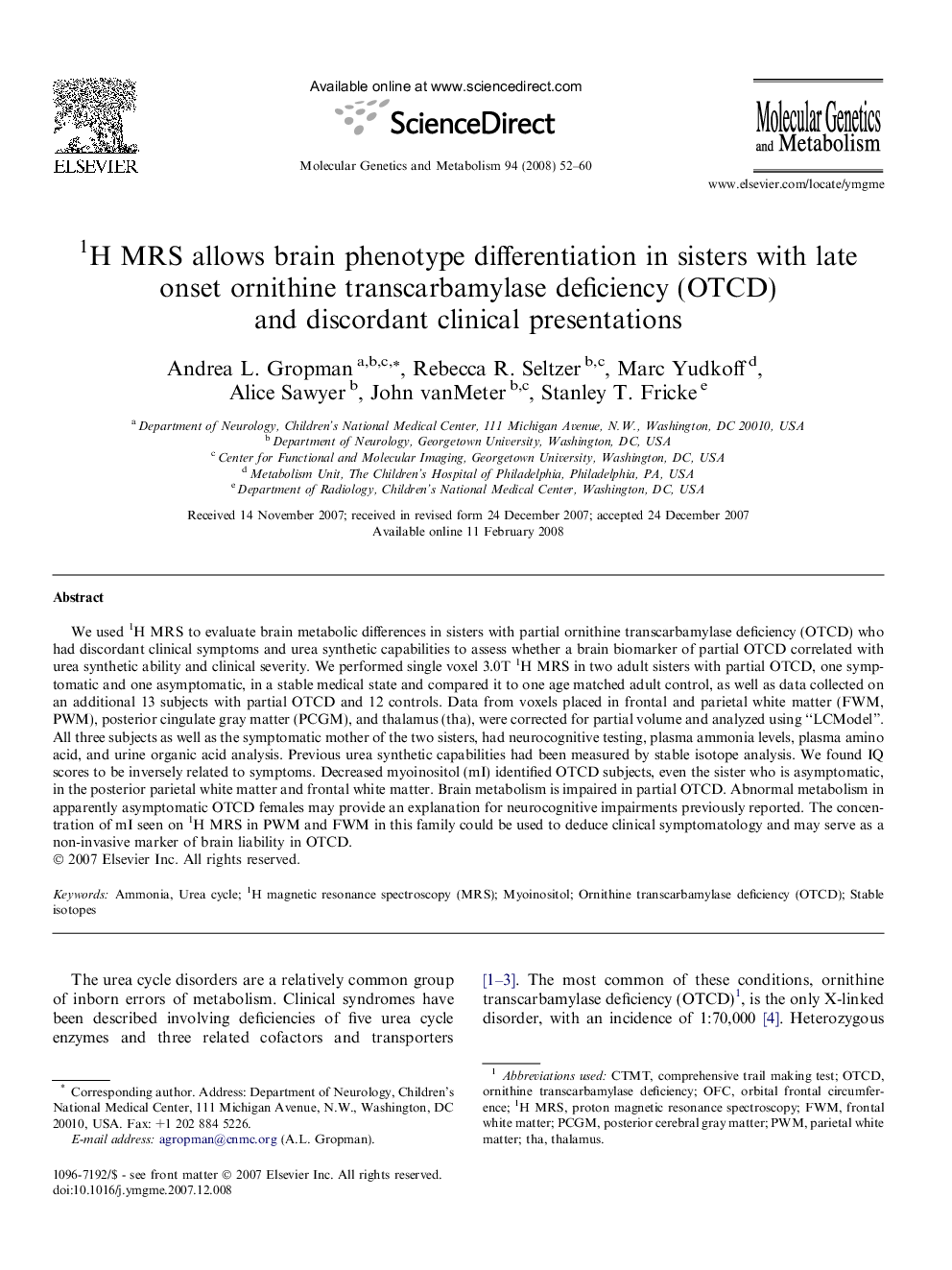| Article ID | Journal | Published Year | Pages | File Type |
|---|---|---|---|---|
| 2000047 | Molecular Genetics and Metabolism | 2008 | 9 Pages |
Abstract
We used 1H MRS to evaluate brain metabolic differences in sisters with partial ornithine transcarbamylase deficiency (OTCD) who had discordant clinical symptoms and urea synthetic capabilities to assess whether a brain biomarker of partial OTCD correlated with urea synthetic ability and clinical severity. We performed single voxel 3.0T 1H MRS in two adult sisters with partial OTCD, one symptomatic and one asymptomatic, in a stable medical state and compared it to one age matched adult control, as well as data collected on an additional 13 subjects with partial OTCD and 12 controls. Data from voxels placed in frontal and parietal white matter (FWM, PWM), posterior cingulate gray matter (PCGM), and thalamus (tha), were corrected for partial volume and analyzed using “LCModel”. All three subjects as well as the symptomatic mother of the two sisters, had neurocognitive testing, plasma ammonia levels, plasma amino acid, and urine organic acid analysis. Previous urea synthetic capabilities had been measured by stable isotope analysis. We found IQ scores to be inversely related to symptoms. Decreased myoinositol (mI) identified OTCD subjects, even the sister who is asymptomatic, in the posterior parietal white matter and frontal white matter. Brain metabolism is impaired in partial OTCD. Abnormal metabolism in apparently asymptomatic OTCD females may provide an explanation for neurocognitive impairments previously reported. The concentration of mI seen on 1H MRS in PWM and FWM in this family could be used to deduce clinical symptomatology and may serve as a non-invasive marker of brain liability in OTCD.
Related Topics
Life Sciences
Biochemistry, Genetics and Molecular Biology
Biochemistry
Authors
Andrea L. Gropman, Rebecca R. Seltzer, Marc Yudkoff, Alice Sawyer, John vanMeter, Stanley T. Fricke,
